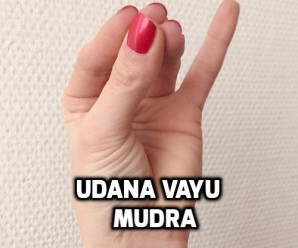
Udana Vayu Mudra- Procedure and Benefits
According to the ancient Yoga and Ayurveda philosophy, Prana is the energy (or force) which flows within and around our bodies and keeps us alive. When we breathe in, the prana enters our body and circulate throughout the body through various energy channels (nadis). For an optimum mind-body health and harmony, the prana should flow smoothly. If it gets blocked or overactive at any point, it would result in mental and physical disharmony and diseases.
Prana is a Sanskrit word which means vital life force.
The prana can be further divided into 5 subtypes which govern different parts of the body and perform different functions:
- Prana vayu
- Apana vayu
- Samana vayu
- Vyana vayu
- Udana vayu
Udana vayu
It is the upward moving energy that governs the growth of the body. The ability to stand, speak, think or make efforts- all these activities are governed by this energy.
- It is concentrated in the chest- near diaphragm and throat.
- It is responsible for various respiratory functions and the ability to speak.
- It governs brain functioning as well because it supports the supply of blood to the brain
Imbalance in Udana vayu would result in-
- Various respiratory system related problems such as asthma and emphysema.
- Various throat related issues such as strep throat and voice hoarseness
- Various brain related issues such as memory loss, depression and intellectual disability
Udana Vayu Mudra
Yoga mudras are hand gesture exercises which aims to balance the body elements by guiding the flow of prana (life energy) through the body. According to Yoga and Ayurveda principles, the human body is made up of five elements- fire, air, water, space and earth. The fingers of our hands represent these elements as below:
During mudra practice one or more fingers touch the thumb, it completes a closed electric circuit and the electromagnetic current (energy) flows which balances the elements represented by those fingers.
These five elements further constitute the three doshas- vata, kapha and pitta. Hence, yoga mudras not only balance the body elements, but, the doshas as well.
How to do Udana Vayu mudra
The tip of index finger, middle finger and ring finger should touch the tip of the thumb. The little finger should remain straight.
Practice this mudra with both hands in any posture- sitting, standing, walking or lying. For best results, do this mudra everyday in sitting posture. Just sit in the easy cross-legged position, keep your spine straight, close your eyes, breathe normally and practice udana vayu mudra.
Start with 10 minutes a day and you can practice it up to 45 minutes a day.
Udana Vayu Mudra is also known as Laughter mudra
As explained above, udana vayu mudra has therapeutic benefits for your brain, throat and respiratory organs.
- It ensures smooth flow of blood to the brain and governs the intellectual abilities- creativity, thinking, setting goals etc.
- It governs the respiratory organs and let you breathe properly.
The breathing is closely related to the brain. By optimizing the brain and breathing functioning, this mudra promotes prosperity, wisdom, joy and laughter in your life. That’s why it is also known as the mudra of laughter.
Other names of Udana Vayu mudra
- Hansi mudra (gesture of the swan)– This mudra resembles the face of the swan. That’s why it is also known as the Hansi mudra.
- Self-love mudra– This mudra ensures smooth flow of udana vayu- which moves upward to open your heart and let you embrace yourself wholeheartedly. It promotes self-love and self acceptance.
Benefits of Udana Vayu mudra
- Promotes calmness and relieves depression, stress and tension
- Improves concentration, alertness and sharpens the memory
- Develops a positive attitude and makes you happy and cheerful
- Relieves pain, tension and discomfort in the throat
- Helps in various speech disorders
- Helpful in asthma, shallow breathing and other breathing difficulties.
Conclusion
Udana vayu mudra (mudra of laughter) is a complementary yoga and would bring positive results when clubbed with a healthy diet, positive lifestyle, exercise, proper sleep and stress-free daily routine. It should not be taken as a replacement to conventional treatment.

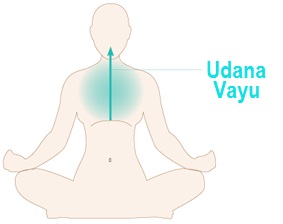
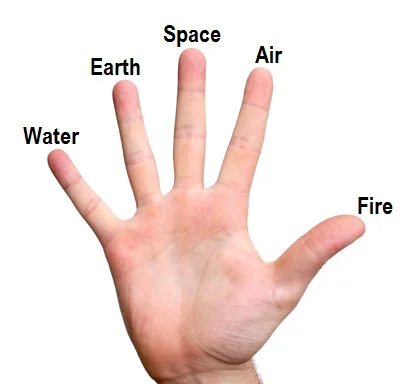
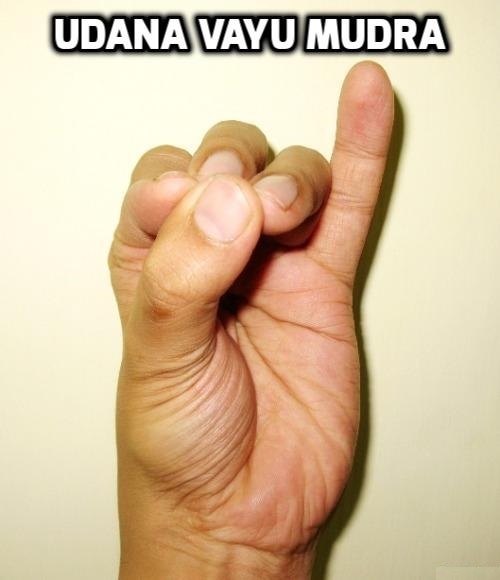
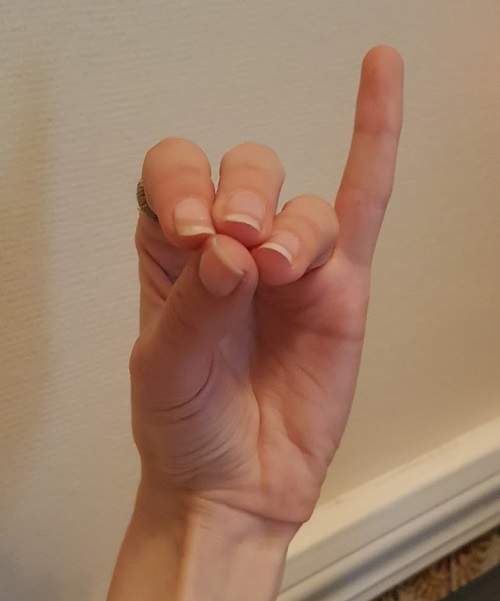
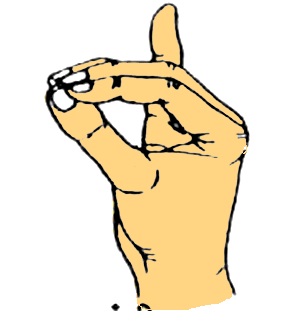
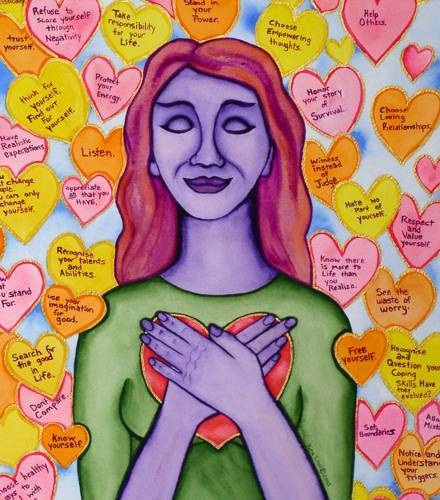
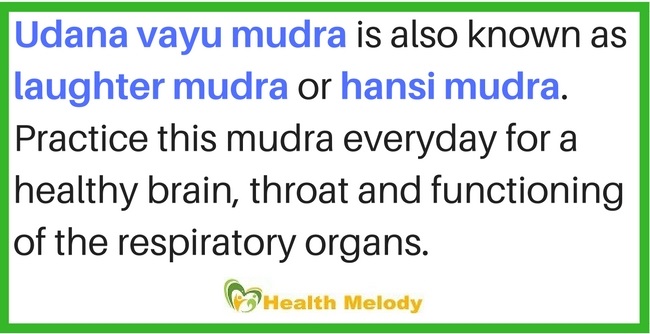


Can the Udana vayu mudra be used for those with hyperthyroidism?